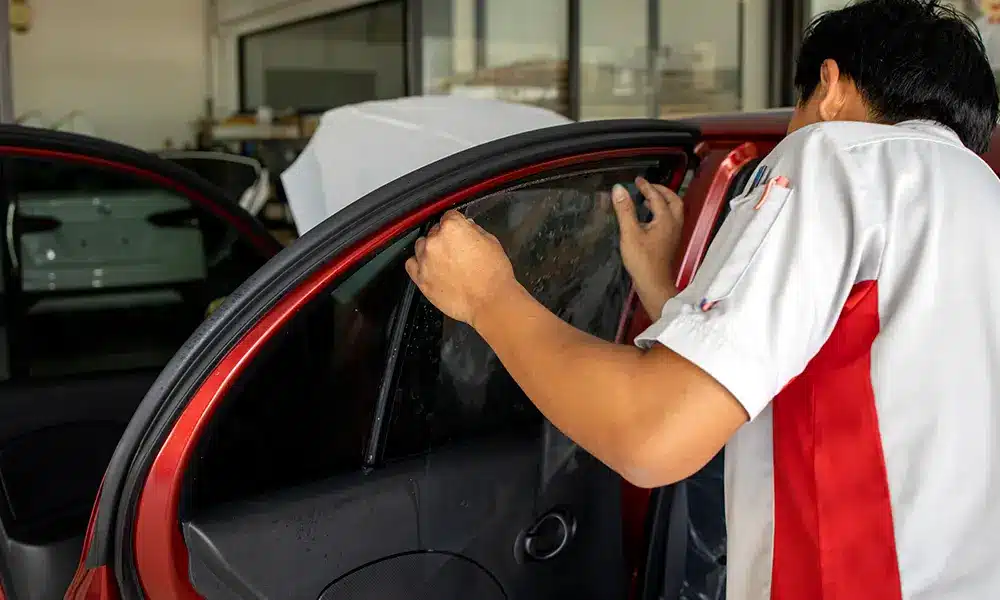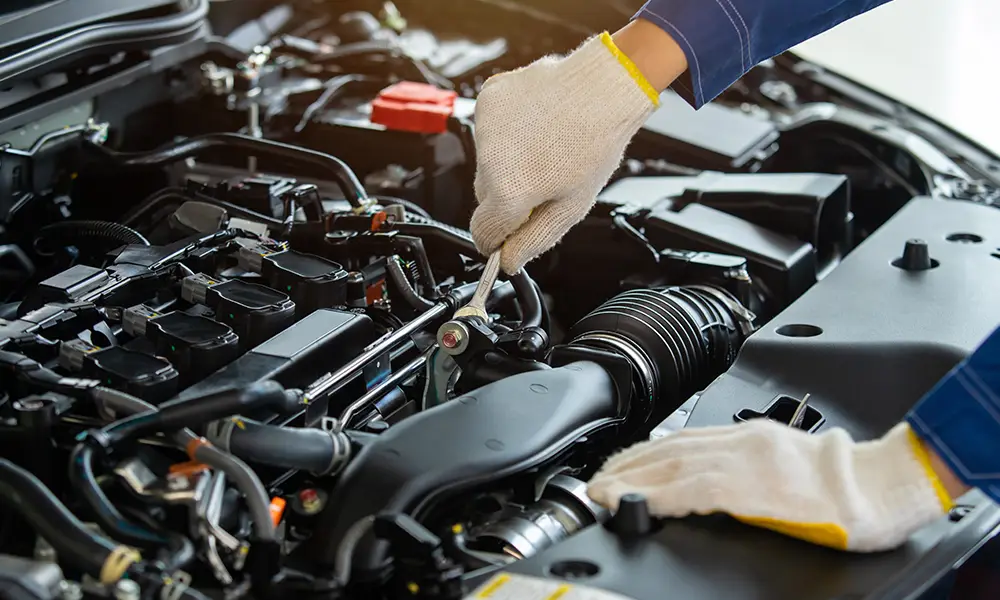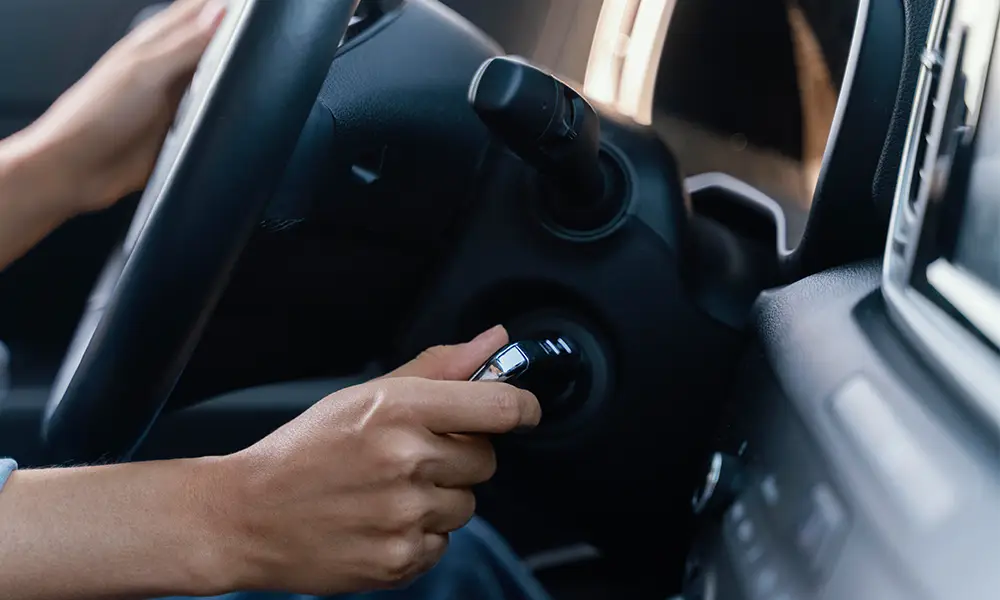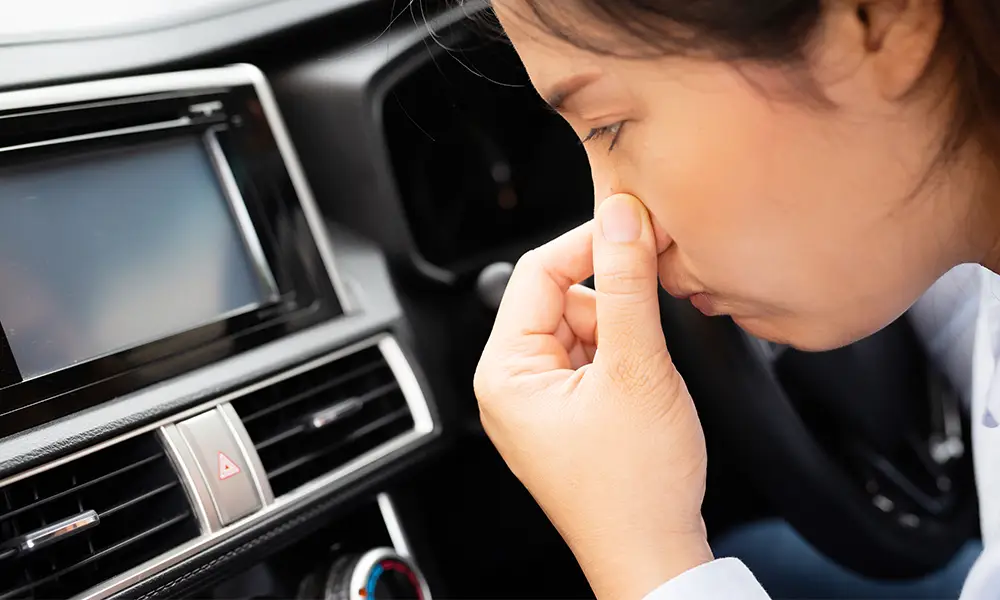Have your car windows started showing bubbles, peeling film, or a purple tint?
Old or illegal window film not only looks bad but can also affect visibility and compliance with Queensland regulations.
That’s why knowing how to remove tint from car windows safely is essential. In this guide, we’ll walk through DIY removal methods, common mistakes to avoid, and when it’s smarter to let a professional handle the job.
Why Remove Old Window Tint?
Keeping damaged tint might seem harmless, but it comes with real problems:
- Reduced visibility: Peeling or bubbling tint can block your view.
- Legal risks: Queensland laws set strict limits on tint darkness.
- Damaged resale value: Buyers see faded tint as neglect.
- Health hazards: UV protection weakens as the film deteriorates.
Removing old tint restores both safety and your car’s appeal.
How to Remove Tint from Car Windows: Step-by-Step
So, how to remove tint from car windows without damaging the glass? You’ll need patience, heat, and the right tools.
The two most common DIY methods are heat removal and ammonia/soap soak. Both work well if you follow the process carefully.
Method 1: Using Heat (Hairdryer or Heat Gun)
Heating softens the adhesive so you can peel the film away cleanly.
Steps:
- Warm the tint film using a hairdryer or heat gun on a low setting.
- Lift a corner gently with a razor blade.
- Peel slowly, keeping heat on the film to avoid tearing.
- Remove residue with adhesive remover or soapy water.
This method is quick and works best for small or lightly aged areas.
Method 2: Ammonia and Soap Soak
This technique is ideal for stubborn, baked-on tint.
Steps:
- Spray a mixture of ammonia and soapy water on the inside of the window.
- Cover the window with a plastic bag to trap moisture.
- Leave it to soak in direct sunlight for 30–60 minutes.
- Peel the softened film carefully and clean the adhesive with a cloth.
Always work in a ventilated area and wear gloves, as ammonia has strong fumes.
Tools You’ll Need for Tint Removal
Before starting, gather:
- Heat gun or hairdryer.
- Razor blade or plastic scraper.
- Spray bottle with soapy water or ammonia mix.
- Microfibre cloths.
- Adhesive remover (optional but helpful).
Having the right tools makes removal faster and reduces the risk of scratching glass.
Cleaning Off Adhesive Residue
After peeling, sticky residue often remains. To remove it:
- Use adhesive remover or rubbing alcohol.
- Spray soapy water and scrape with a plastic scraper.
- Wipe clean with a microfibre cloth until the glass shines.
Skipping this step leaves streaks that can attract dirt and reduce visibility.
Common Mistakes to Avoid When Removing Tint
DIY removal can save money, but many drivers make costly errors:
- Using a razor blade directly on glass, causing scratches.
- Applying too much heat and cracking the window.
- Ripping off tint too quickly, leaving layers behind.
- Forgetting to ventilate when using chemicals.
Take your time and work patiently to avoid damage.
How Long Does Tint Removal Take?
Expect each window to take 30–60 minutes, depending on tint age and condition.
Heavily baked-on tint or rear windows with defroster lines may take longer. Rushing the process risks tearing film and doubling the work.
Legal Considerations in Queensland
Queensland regulations specify minimum visible light transmission (VLT) levels for windows. Outdated or too-dark tint can earn fines.
When removing tint, it’s smart to check laws before replacing it, ensuring your new film complies fully.
Can You Remove Tint from Rear Windows with Defrosters?
Yes, but with extra care. Use a plastic scraper only, never metal, as rear defroster lines are fragile.
Heat works best here, as it loosens adhesive without scratching delicate surfaces.
When to Seek Professional Help
DIY is possible, but there are times to call the experts:
- If the tint is very old or layered.
- If you’re worried about damaging defroster lines.
- If you want to reapply a new, legal tint immediately.
Professionals use specialised tools that guarantee a clean finish without risk.
Preventing Future Tint Damage
Once you’ve removed old tint, extend the life of your new film by:
- Parking in shaded or covered areas.
- Using sunshades to reduce UV exposure.
- Cleaning with ammonia-free glass cleaners.
- Avoid sharp objects near the windows.
Good care means your tint lasts longer without peeling or fading.
Conclusion
So, how to remove tint from car windows without damaging your vehicle? With heat, patience, and the right tools, you can restore your glass to its original clarity.
At Car One, we know tint removal can be tricky. Our Brisbane team offers professional tint removal and replacement that complies with Queensland standards and protects your vehicle’s value.
Call us today on (07) 3607 0215 to book your appointment with Car One, Brisbane’s trusted automotive specialists.
FAQs
1. How do you remove tint from car windows safely?
Use heat or ammonia/soap soak methods, peel carefully, and clean adhesive with safe removers.
2. Can I use a razor blade to remove tint?
Only for lifting corners, never scrape directly on glass, especially rear windows.
3. How long does it take to remove tint?
Usually 30–60 minutes per window, depending on tint age and condition.
4. Is it legal to drive with peeling tint in Brisbane?
Peeling tint may affect compliance with Queensland VLT laws and could result in fines.
5. Should I replace the tint after removal?
Yes, especially if your car is exposed to the sun daily. Fresh tint improves UV protection and comfort.




